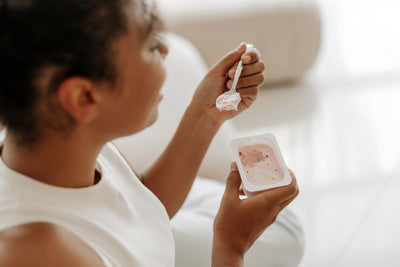I remember pre-Covid training 6 days a week, with some of those days being twice a day. It would be a high-intensity class 4 days a week and one day would be coupled with yoga. Then I have heavy lifting twice a week with pilates on both days. Though small, I was pretty ripped. My body fat was 14% which is even low for athletes, but I felt this was the routine that I needed.
Thinking back, it’s hard to say whether the endorphins from the workouts were what I sought, or if it was about the look I wanted to maintain. Either way, it’s all upside, right? Well, not quite. My hormones were going off sending me into early menopause, I was always exhausted, and it was tough for me to see advancements in my heavy lift days, especially because I would always have pain somewhere to compensate for. I had to turn this train around before it crashed, and all the signs pointed to…rest.
Rest days are not just days to ease up on your workouts, but they are days to allow your body to actually reap the benefits of all your hard work.
Rest days for muscle recovery
Whether it’s strength training or cardio, strenuous workouts cause muscle breakdown. Without a recovery day after that workout, you will continue to damage your muscles and it will get no time to rebuild and be stronger for your next training session. This overtraining doesn’t just cause you to potentially be weaker for that next session, but it can lead to overuse injury.
An overuse injury happens when muscles, tendons, and joints experience pain due to repeat trauma. For example, when you lift a challenging weight repetitively overhead on a Tuesday, then Wednesday you do the same thing with the same weight not considering your muscle is damaged from the previous day, this can result in pains, tears, and fractures.
Rest days for hormone recovery
As much as I can, I try to remind people not to play around with your cortisol hormone. Cortisol is a very dominant hormone. It’s great at giving us the energy we need to get through a hard workout. But it’s also great at pausing what it deems unessential body functions during that time like your immune, reproductive, and digestive system.
Too much intense training, while great for your endorphins, can cause your cortisol hormone to be out of balance and overly used, causing things like a repressed immune system, reproductive hormone imbalance, sleeplessness, anxiety, gut issues and increased fat, especially around the abdomen. Your brain needs to learn that these intense moments are rare occurrences so when you’re resting, it knows most of the time, it can calm down and let the body function as normal.
Daily intense workouts, especially those potentially combined with an intense lifestyle, keeps your mind in a constant state of stress where cortisol then dominates regularly causing long-term damage.
How long should you rest between sets
When looking at strength training we focus generally on 3 goals—endurance, strength, and muscle growth. Rest makes a major difference depending on what goal you’re after.
Muscle growth, also known as hypertrophy, is what you think of when you think body building. Though you will build some strength, the bigger change ends up being the physical size of your muscles. This usually incorporates 6-12 reps of an exercise with about :60 to :90 second of rest in-between sets.
Strength training focuses on a conversation between your nervous system and your muscles. Your brain is giving your muscles the signal that it needs to move something heavy. As growth does come along with this, the main result becomes moving heavier things. This type of training involves about 1 to 5 reps of an exercise with 3 to 5 minutes of rest in-between sets.
Endurance training builds the respiratory system and muscular system to handle physical activity over a steady period of time. With endurance training we’re looking about 13 or more reps and limiting rest between sets. While some strength comes along with it, you end up building up a stronger cardiovascular system while reducing injury during repetitive movement over a long period of time.
Get more rest
It’s important to build a plan for yourself. I love all forms of training but I needed to be smarter about it in order to actually get over plateaus and continue to reach my goals.
It’s recommended to limit high-intensity workouts to 3 times a week in order to have enough time for recovery. Intensities are different for everyone and there’s different ways to test out how intense you’re working. You can use heartrate monitors to see if you are working at a high intensity which is at about 75% or more of your maximum heart rate. You can also use the talk test which is your ability to converse during your workout. If you can’t at all, you’re at a high intensity.
It is also recommended to have 2 or 3 rest days a week. Rest days don’t have to exclude movement. You just want days where your nervous system isn’t triggered to kick up your cortisol, and you want to give worked muscles a rest. These days can include movement like pilates, yoga, and mobility work.
After making changes to my routine to incorporate more rest, I’ve been much happier with my performance and Inbody results. I’m able to move heavier things, my muscle mass has grown, I see my physical therapist less and I am finally getting a full night’s sleep.






Leave a comment